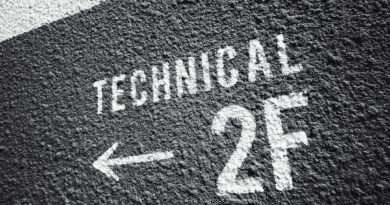What are the typical customs and immigration procedures when entering Europe?
Europe is one of the most popular tourist destinations in the world, with millions of people visiting the continent each year. As such, it is important to understand the typical customs and immigration procedures when entering Europe.
When travelling to Europe, visitors must first obtain a valid passport and visa, if required. Depending on the country of origin, a visa may be required for stays of longer than 90 days. For example, citizens of the United States, Canada, Australia, and New Zealand do not need a visa for stays of up to 90 days. However, citizens of other countries may need to apply for a visa before travelling.
Once a valid passport and visa have been obtained, visitors must present their documents at the immigration desk at the airport or port of entry. Immigration officers will check the documents and ask questions about the purpose of the visit. They may also ask for proof of financial means, such as a bank statement or credit card.
Once the immigration officer is satisfied with the documents, visitors will be allowed to enter the country. However, visitors may be required to fill out a customs declaration form, which will ask for details about the items they are bringing into the country. This form must be completed and presented to the customs officer.
The customs officer will then check the items listed on the form and may ask additional questions. Visitors may be required to pay duty on certain items, such as alcohol and tobacco. It is important to note that some items, such as firearms and certain types of drugs, are strictly prohibited and may result in criminal charges.
Once the customs officer is satisfied, visitors will be allowed to enter the country. However, they may be required to present their documents again at the exit point. It is important to note that visitors must have all of their documents with them when they leave the country, as they may be asked to present them again.
In addition to the typical customs and immigration procedures, visitors should also be aware of the local laws and regulations. For example, visitors should be aware of the local drinking age, as well as any laws regarding the possession and use of drugs. It is also important to note that certain items, such as firearms, may be prohibited in certain countries.
Finally, visitors should also be aware of the local currency and exchange rates. It is important to note that some countries may not accept foreign currency, so it is important to have the local currency on hand.
In conclusion, it is important to understand the typical customs and immigration procedures when entering Europe. Visitors must obtain a valid passport and visa, if required, and present their documents at the immigration desk. They may also be required to fill out a customs declaration form and pay duty on certain items. Finally, visitors should also be aware of the local laws and regulations, as well as the local currency and exchange rates.
The European Union (EU) is a unique political and economic union that consists of 28 member states. It is the largest trading bloc in the world and is a major destination for international travelers. As such, it is important to understand the typical customs and immigration procedures when entering Europe.
The first step when entering Europe is to check the entry requirements for the specific country you are visiting. Each EU member state has its own immigration policies and procedures, so it is important to research the requirements for the country you are visiting before you travel. In general, most countries require a valid passport and visa for entry. Depending on the country, you may also need to provide proof of sufficient funds, proof of health insurance, and a valid return ticket.
Once you have checked the entry requirements for the country you are visiting, it is important to familiarize yourself with the customs and immigration procedures for the EU as a whole. All EU member states are part of the Schengen Area, which is a group of countries that have agreed to allow free movement of people between them. This means that if you are visiting one EU country, you can travel freely to any other EU country without having to go through immigration or customs procedures. However, if you are traveling to a non-EU country, you will need to go through the necessary immigration and customs procedures for that country.
When entering Europe, you will need to fill out a customs declaration form. This form is used to declare any goods that you are bringing into the EU, such as alcohol, tobacco, and other items. You will also need to declare any cash that you are carrying with you. Depending on the country, you may also need to declare any items that you are bringing back with you from your trip.
Once you have gone through the necessary immigration and customs procedures, you will need to obtain a visa. Depending on the country you are visiting, you may need to apply for a visa in advance or you may be able to obtain a visa upon arrival. In general, most EU countries require a visa for stays of more than 90 days.
Finally, it is important to understand the customs regulations for the EU. All EU countries have their own customs regulations, so it is important to research the regulations for the country you are visiting before you travel. In general, you are allowed to bring a certain amount of goods into the EU without paying any taxes or duties. However, if you are bringing in goods that exceed the allowed limit, you may be required to pay taxes or duties.
In conclusion, it is important to understand the typical customs and immigration procedures when entering Europe. It is important to research the entry requirements for the specific country you are visiting, as well as the customs regulations for the EU as a whole. Additionally, you may need to obtain a visa in advance or upon arrival, depending on the country you are visiting. By understanding the customs and immigration procedures for Europe, you can ensure that your trip goes smoothly and that you are able to enjoy your time in the EU.




